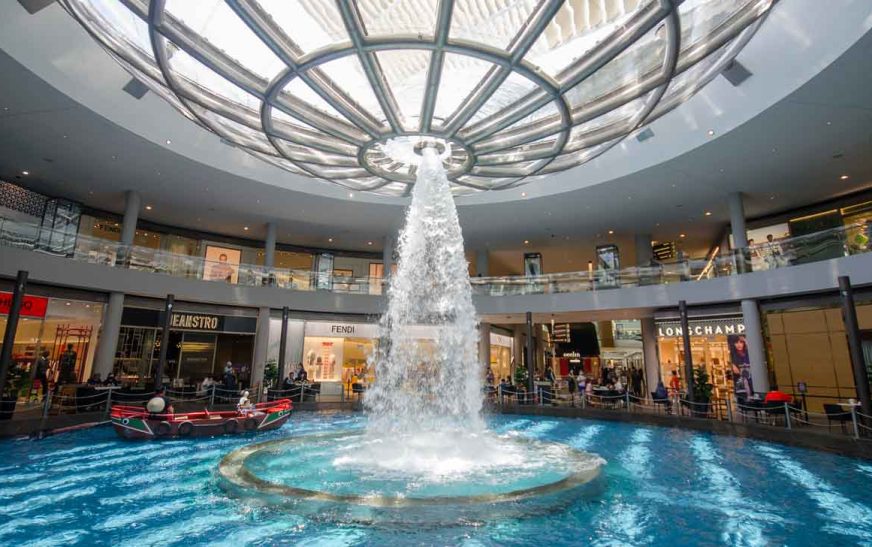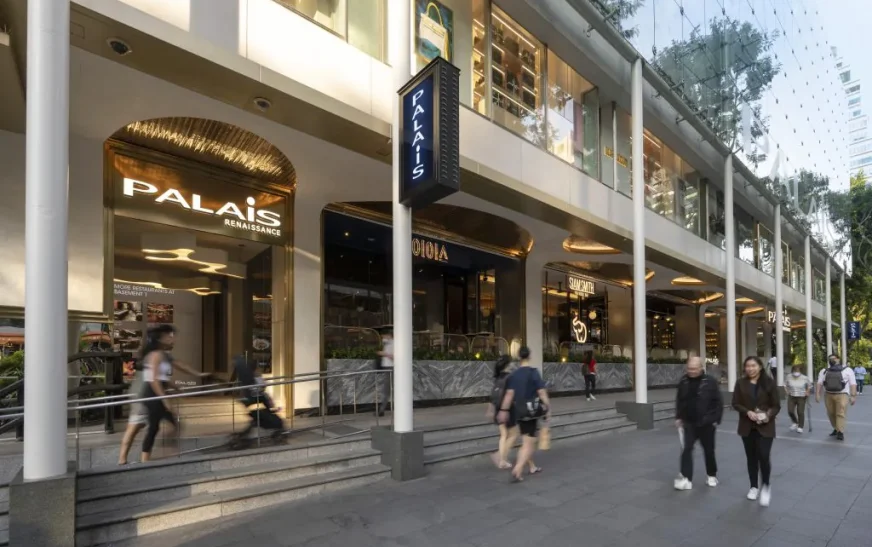Singapore is renowned for its stunning architecture, and one of the most captivating features is the Rain Oculus at Marina Bay Sands. This iconic structure combines art, engineering, and nature in a unique and mesmerising way. In this article, we will delve into 10 fascinating facts about the Rain Oculus, exploring its history, design, and cultural significance.
Rain Oculus: A Modern Engineering Marvel
The Rain Oculus is a remarkable example of modern engineering and design. Located at Marina Bay Sands, it was designed by renowned artist and architect Ned Kahn in collaboration with Moshe Safdie, the architect behind Marina Bay Sands. The installation was completed in 2011 and has since become a symbol of Singapore’s commitment to innovation.
Inspired by Nature
The design of the Rain Oculus is inspired by the natural phenomenon of a whirlpool. The swirling motion of the water is reminiscent of a vortex or whirlpool, which occurs naturally in rivers and oceans. This connection to nature is a central theme in the design of Marina Bay Sands and the surrounding area.
Rain Oculus:The Largest Indoor Waterfall in the World
The Rain Oculus holds the title of the largest indoor waterfall in the world. It stands at 22 meters high and is located in the atrium of Marina Bay Sands. The waterfall is part of a larger complex that includes a shopping mall, hotel, and casino, making it a popular destination for tourists and locals alike.
A Symbol of Sustainability
Beyond its aesthetic appeal, the Rain Oculus is also a symbol of sustainability. The waterfall collects rainwater, which is then recycled and used to irrigate the surrounding gardens and green spaces. This innovative use of water helps to reduce the building’s environmental impact and showcases Singapore’s commitment to sustainability.
Artistic Representation
The Rain Oculus is not just an engineering feat but also a work of art. It was designed by artist Ned Kahn, whose work often explores the intersection of art, science, and nature. The swirling water creates a dynamic and ever-changing visual display that captivates visitors and reflects the artistic vision behind the installation.
Daily Water Spectacle
Visitors to Marina Bay Sands can experience the RainOculus up close by standing on the viewing platform located beneath the waterfall. Every hour, the waterfall is activated, creating a dramatic spectacle as thousands of gallons of water cascade down from the oculus above. This daily ritual has become a popular attraction for visitors to Singapore.
Interactive Experience
One of the unique aspects of the RainOculus is its interactive nature. Visitors can stand beneath the waterfall and feel the rush of water as it descends from the oculus above. The experience is both immersive and educational, allowing visitors to learn about the importance of water conservation and sustainability.
Cultural Significance
The Rain Oculus holds cultural significance in Singapore as a symbol of prosperity and abundance. Water is a vital element in Asian cultures, symbolising wealth, purity, and renewal. The installation’s design and location at Marina Bay Sands reflect Singapore’s role as a global hub of commerce and innovation.
Architectural Integration
The RainOculus is seamlessly integrated into the architecture of Marina Bay Sands. Its circular shape and cascading water complement the modern design of the atrium, creating a harmonious blend of art and architecture. The installation serves as a focal point for the atrium, drawing visitors to its mesmerising display of water and light.
Iconic Landmark
Finally, the Rain Oculus has become an iconic landmark in Singapore. It is featured prominently in promotional materials and photographs of Marina Bay Sands, symbolizing the city-state’s modernity and innovation. The installation has also been recognized internationally for its design and engineering, further solidifying its status as a must-see attraction.
Conclusion
In conclusion, the Rain Oculus at Marina Bay Sands is much more than a stunning architectural feature—it is a symbol of Singapore’s commitment to sustainability, innovation, and artistic expression. Designed by artist Ned Kahn, this indoor waterfall captivates visitors with its swirling water and mesmerising display. Whether you’re a tourist visiting Singapore or a local resident, experiencing the Rain Oculus is a must-do activity that highlights the intersection of art, engineering, and nature.
FAQs
1. How does the Rain Oculus work?
The Rain Oculus collects rainwater that falls through the central oculus, creating a swirling vortex effect. The water is then recycled for use in the building’s irrigation system.
2. Is the RainOculus accessible to the public?
Yes, the RainOculus is located in the atrium of Marina Bay Sands and is accessible to the public. Visitors can view the waterfall up close from the viewing platform.
3. What is the best time to visit the RainOculus?
The RainOculus operates daily, with water displays occurring every hour. Any time of day is suitable for visiting, but evenings can be particularly atmospheric.
4. Is there an entrance fee to see the RainOculus?
No, there is no entrance fee to see the RainOculus. It is part of the Marina Bay Sands complex and is free for visitors to experience.
5. How can I get to Marina Bay Sands?
Marina Bay Sands is easily accessible by public transport, including buses and the MRT (Mass Rapid Transit). The nearest MRT station is Bayfront (CE1/DT16).










